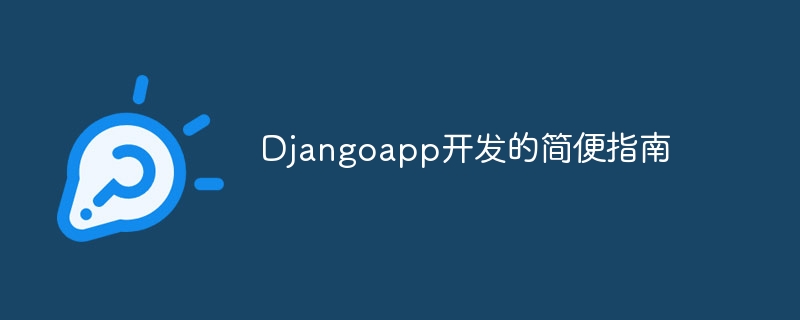

A simple guide to Django app development (with code examples)
Introduction:
Django is a popular Python web framework that provides a fast and flexible way to develop high-quality web applications. Using Django, we can easily build complex applications and interact with databases. This article will introduce the basic development steps of Djangoapp (Django application) and provide specific code examples.
1. Install Django
First, we need to install Django in the local environment. It can be installed by running "pip install Django" from the command line. After the installation is complete, we can verify whether the installation was successful by running "django-admin --version".
2. Create Djangoapp
Run the following command to create a Djangoapp:
django-admin startapp myapp
This will create a folder called myapp in the current directory that contains the basic structure of the Djangoapp.
3. Configure database connection
Find the DATABASES section and configure it according to your database type. The following is an example configuration of a SQLite database:
DATABASES = {
'default': {
'ENGINE': 'django.db.backends.sqlite3',
'NAME': BASE_DIR / 'db.sqlite3',
}
}4. Define the model
Define your model in a file. The following is a simple example:
from django.db import models
class MyModel(models.Model):
name = models.CharField(max_length=100)
age = models.IntegerField()
def __str__(self):
return self.name5. Migrate the database
Run the following command in the terminal to apply the model changes:
python manage.py makemigrations python manage.py migrate
This will create the corresponding database tables and apply the model changes.
6. Create views
Define your view functions in a file. The following is a simple example:
from django.shortcuts import render
from django.http import HttpResponse
def hello(request):
return HttpResponse("Hello, Djangoapp!")7. Configure URL
Add URL configuration in the file. The following is a simple example:
from django.urls import path
from myapp.views import hello
urlpatterns = [
path('hello/', hello, name='hello'),
]8. Running the service
Run the following command in the terminal to run the development server:
python manage.py runserver
Conclusion:
This article briefly introduces the basic steps of developing Djangoapp using Django and provides specific code examples. Through this guide, I hope readers can quickly get started with Djangoapp development and apply it to actual projects. As you learn more, you will be able to build more complex and feature-rich web applications. I wish you success in your Django development journey!
The above is the detailed content of A simple guide to Django app development. For more information, please follow other related articles on the PHP Chinese website!